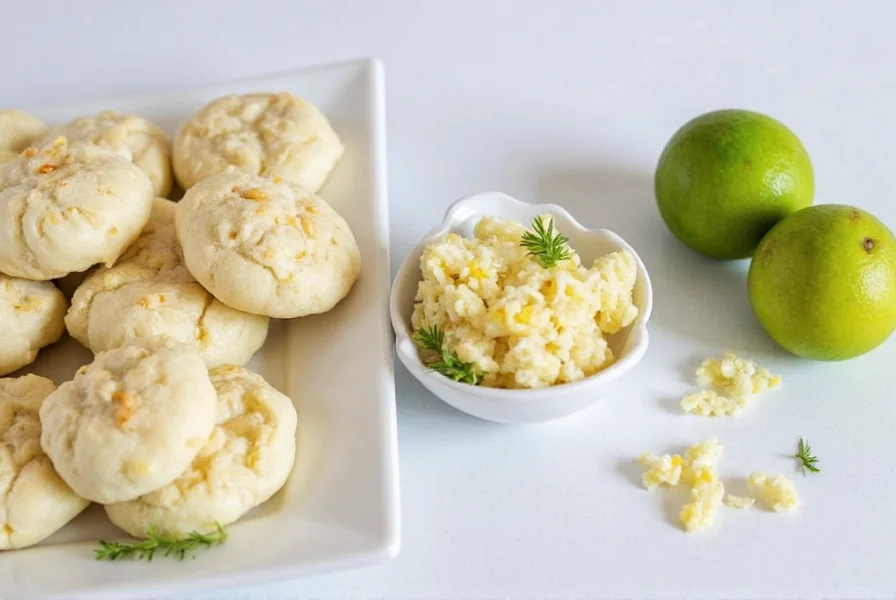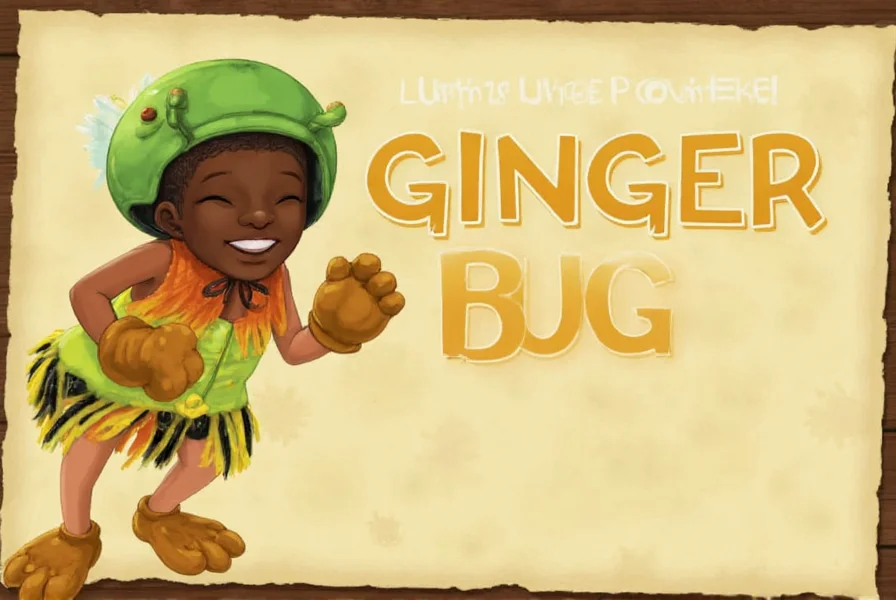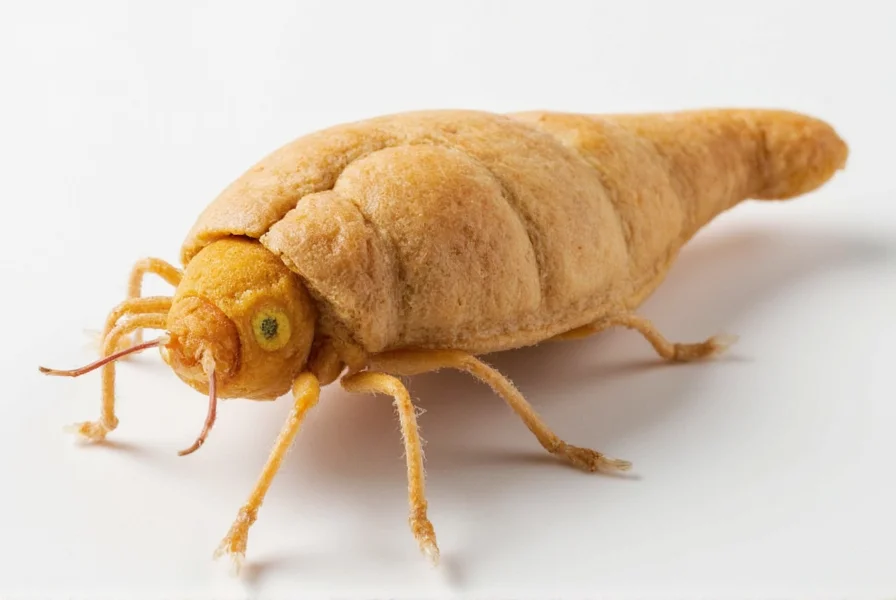Creating a ginger bug is a straightforward process that transforms simple ingredients into a powerful fermentation culture. This natural starter captures wild yeast and beneficial bacteria from fresh ginger, allowing you to craft homemade ginger beer and other fermented beverages with complex flavors and probiotic benefits. Unlike commercial yeast, a ginger bug develops a unique microbial ecosystem that gives your drinks distinctive character while supporting gut health.
What Exactly Is a Ginger Bug?
A ginger bug represents one of the simplest forms of wild fermentation culture. It's essentially a symbiotic colony of wild yeast and lactic acid bacteria that naturally occurs on the skin of fresh ginger root. When properly cultivated with sugar and water, this microorganism community grows robust enough to ferment sweetened ginger tea into sparkling ginger beer.
The magic happens because ginger naturally contains wild yeast and beneficial bacteria on its surface. When combined with sugar (which feeds these microorganisms) and water (which provides the medium), these microbes multiply and create carbon dioxide and trace alcohol—giving your homemade ginger beer its characteristic fizz and subtle tang.

Essential Equipment for Making Ginger Bug
Before starting your ginger bug recipe, gather these basic kitchen items:
- 1-quart glass mason jar (avoid metal or plastic)
- Breathable cover (coffee filter, cheesecloth, or paper towel)
- Rubber band or jar ring
- Wooden or plastic stirring utensil (no metal)
- Grater for fresh ginger
- Measuring spoons
Using non-reactive materials is crucial for successful wild fermentation. Metal can react with the acidic environment and potentially harm your developing culture. Glass containers provide the ideal neutral environment for your ginger bug to thrive.
Ingredients for a Successful Ginger Bug
The simplicity of a ginger bug lies in its minimal ingredients, but quality matters:
- Fresh organic ginger root (3-4 inches total) - organic is preferred to avoid pesticides that might inhibit fermentation
- Filtered or spring water (2½ cups) - tap water often contains chlorine that kills beneficial microbes
- Raw sugar (¼ cup total) - organic cane sugar, sucanat, or coconut sugar work best
Avoid using honey in your initial ginger bug creation, as its natural antibacterial properties can prevent proper fermentation. Save honey for flavoring your finished ginger beer if desired.
Step-by-Step Ginger Bug Creation Process
Follow these precise steps for a thriving ginger bug culture:
- Day 1: Grate 2 tablespoons of fresh ginger (skin on) into your clean glass jar. Add 2 tablespoons sugar and 2 cups filtered water. Stir well with non-metal utensil. Cover with breathable material secured by rubber band.
- Days 2-7: Each day, add 1 tablespoon freshly grated ginger and 1 tablespoon sugar. Stir vigorously for 30 seconds to incorporate oxygen, which helps the yeast multiply.
- Observation: By day 3-4, you should notice small bubbles forming. The mixture will become increasingly fizzy and develop a pleasant, slightly alcoholic aroma.
- Maturity: Your ginger bug is ready when it's consistently bubbly within hours of feeding, typically after 5-7 days. It should have a pleasantly tangy, gingery smell without any mold or unpleasant odors.
| Day | Ginger Added | Sugar Added | Expected Development |
|---|---|---|---|
| 1 | 2 tbsp | 2 tbsp | Clear liquid, no bubbles |
| 2 | 1 tbsp | 1 tbsp | Slight cloudiness, few bubbles |
| 3 | 1 tbsp | 1 tbsp | Noticeable bubbles, mild fermentation smell |
| 4-5 | 1 tbsp | 1 tbsp | Vigorous bubbling, tangy aroma |
| 6-7 | 1 tbsp | 1 tbsp | Ready for use in ginger beer |
Troubleshooting Common Ginger Bug Issues
Even with careful attention, your homemade ginger bug might encounter challenges. Here's how to address common problems:
- No bubbling after 3 days: Ensure you're using fresh ginger (older ginger has fewer active microbes). Try moving to a slightly warmer location (70-75°F/21-24°C). Confirm you're using non-chlorinated water.
- White film on surface: This is usually kahm yeast, which is harmless. Simply skim it off and continue feeding. If it persists, increase feeding frequency.
- Unpleasant odor: A strong alcoholic or vinegar smell indicates over-fermentation. Feed immediately with equal parts ginger and sugar. If it smells rotten, start over.
- Mold growth: Any fuzzy, colored growth means contamination. Discard the entire batch and sterilize your equipment before trying again.
Maintaining Your Active Ginger Bug Culture
Once established, your ginger bug requires regular care to remain viable:
- Daily feeding: If kept at room temperature, feed daily with 1 tbsp ginger and 1 tbsp sugar to maintain activity
- Refrigeration: Store in the refrigerator with a tight lid for up to 2 weeks between uses. Before using, bring to room temperature and feed for 2-3 days to reactivate
- Long-term storage: For extended breaks, feed generously, then freeze portions in ice cube trays. Thaw and feed to reactivate
- Reviving dormant bugs: If your culture becomes sluggish, try feeding with organic cane sugar instead of other sweeteners
Using Your Ginger Bug for Homemade Ginger Beer
When your ginger bug shows vigorous bubbling within hours of feeding, it's ready to use. Here's how to make basic ginger beer:
- Prepare ginger tea: Simmer 1½ cups grated ginger in 4 cups water for 20 minutes
- Add 1½ cups sugar and cool to room temperature
- Strain tea into gallon container, add ½ cup active ginger bug
- Cover with breathable material and ferment at room temperature for 2-5 days
- Bottle in swing-top bottles, leaving 1-2 inches headspace
- Allow 1-3 days for carbonation at room temperature, then refrigerate
Always "burp" bottles daily during carbonation to prevent over-pressurization. Your homemade ginger beer should develop pleasant carbonation and a balanced sweet-tart flavor.
Safety Considerations for Ginger Bug Fermentation
While generally safe, proper technique ensures successful and safe fermentation:
- Always use clean equipment to prevent unwanted bacterial growth
- Discard immediately if you see any mold (fuzzy, colored growth)
- Use proper fermentation vessels that allow gas to escape during primary fermentation
- When bottling, use appropriate containers designed for carbonation to prevent explosions
- Those with compromised immune systems should consult a healthcare provider before consuming homemade fermented beverages












 浙公网安备
33010002000092号
浙公网安备
33010002000092号 浙B2-20120091-4
浙B2-20120091-4